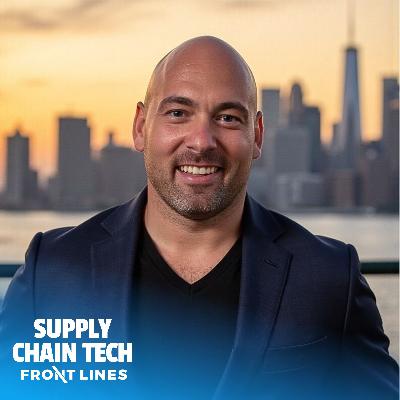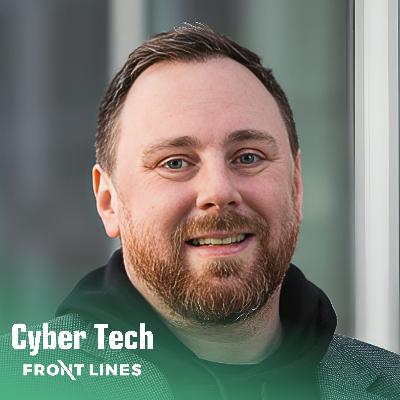How Assembled systematized founder-led LinkedIn content | Ryan Wang
Description
Assembled is the AI customer support platform powering hundreds of modern enterprises including Stripe, Robinhood, Salesforce, and Ashley Furniture. The company's largest customer operates a 20,000-person contact center. With products spanning AI chat and voice agents that resolve 70-80% of tickets to sophisticated workforce management and forecasting systems, Assembled's core thesis challenges the industry narrative: the best support teams orchestrate humans and AI in perfect balance rather than replacing one with the other. In a recent episode of Category Visionaries, we sat down with Ryan Wang, CEO and Co-Founder of Assembled, to explore the company's journey from eight months to first customer to becoming the infrastructure behind customer experiences at scale.
Topics Discussed:
- The reality gap between AI support demos and production deployment
- Why sophisticated buyers now demand quality benchmarks and latency metrics over feature lists
- The hidden complexity in contact center work: KYC compliance, fraud review, and multi-system workflows
- How the Klarna "fire everyone" approach failed and what it reveals about the market
- Patrick and John Collison's all-company support rotations at Stripe
- The product-market fit question that ended six months of wrong direction
- Enterprise destiny baked into early product decisions
- Converting LinkedIn discomfort into a systematic storytelling engine
- Path dependence from workforce management to AI automation products
- Why customer support problems rhyme with operations challenges across industries
GTM Lessons For B2B Founders:
- Quality-first positioning wins when buyers move past demo amazement: Ryan observed a critical market shift. Sophisticated buyers now run rigorous bake-offs with training data variability and ask for latency metrics, quality benchmarks, and production performance data. The last three AI deals Assembled closed required detailed competitive evaluations. When messaging emphasizes cost reduction over quality improvement, you lose credibility with buyers who understand that turning off support entirely would be free—they're investing in lifetime value and loyalty creation. Position around the buyer's actual objective hierarchy: quality first, efficiency as validation.
- The product-market fit question that encodes your entire GTM strategy: Ryan's co-founder asked prospects "What is software that you must have or you hate your options?" This single question revealed multiple strategic insights simultaneously: you're targeting painkillers in established categories, pursuing replacement sales against weak incumbents, and entering markets with demonstrated willingness to pay. For Assembled, this naturally surfaced workforce management—a must-have category with Windows 95-era tools serving 20,000-person teams. The question's elegance is how it filters for product-market fit and GTM approach in one conversation.
- Access the best through respect signals, not connections: When hiring his first engineering executive at 15 people, Ryan got an introduction to a former VP of Engineering at Facebook, then explicitly signaled time respect: requested only 15 minutes, clarified he wasn't recruiting, offered availability "Saturday 8pm or anytime," and had specific questions prepared. The call happened at an odd Saturday time. The insight wasn't just learning about "Dual Lands" leadership (a Magic: The Gathering reference)—it was understanding how exceptional minds construct mental models. You can reach these people through investor networks or multi-hop introductions, but earning their time requires demonstrating you'll use it surgically.
- Recognize when you're not "the company" to avoid strategic errors: A top recruiting firm told Ryan "you're not Stripe, so you can't sell people like you're Stripe." At any moment, one Silicon Valley company occupies a unique position—Stripe then, OpenAI now—where normal rules don't apply. That company can eliminate product managers, remove all titles, or make unconventional demands. Understanding you're not in that position prevents catastrophic hiring missteps. Ryan had to recalibrate from Stripe-era patterns where his recruiter became Anthropic's president and his onboarding buddy became OpenAI's president. Your positioning must match your actual market gravity, not your aspirational tier.
- Systematize founder storytelling to compound credibility: Ryan solved founder marketing discomfort by reframing from self-promotion to being an intermediary—sharing customer stories from Armenia, banking conferences, and global contact centers rather than broadcasting opinions. The system: Friday morning sessions with prompts ("interesting things from this week," "near-death moments," "challenges from 1-10M to 10-20M ARR," "why London now?"), team filters for compelling angles, three drafts weekly, then editing. The Science of Storytelling principles apply: narratives demonstrating lived experience build more credibility than thought leadership. This creates a flywheel where audience members surface their own stories in comments and DMs, feeding future content.
//
Sponsors:
Front Lines — We help B2B tech companies launch, manage, and grow podcasts that drive demand, awareness, and thought leadership. www.FrontLines.io
The Global Talent Co. — We help tech startups find, vet, hire, pay, and retain amazing marketing talent that costs 50-70% less than the US & Europe. www.GlobalTalent.co
//
Don't Miss: New Podcast Series — How I Hire Senior GTM leaders share the tactical hiring frameworks they use to build winning revenue teams. Hosted by Andy Mowat, who scaled 4 unicorns from $10M to $100M+ ARR and launched Whispered to help executives find their next role.
Subscribe here:
























